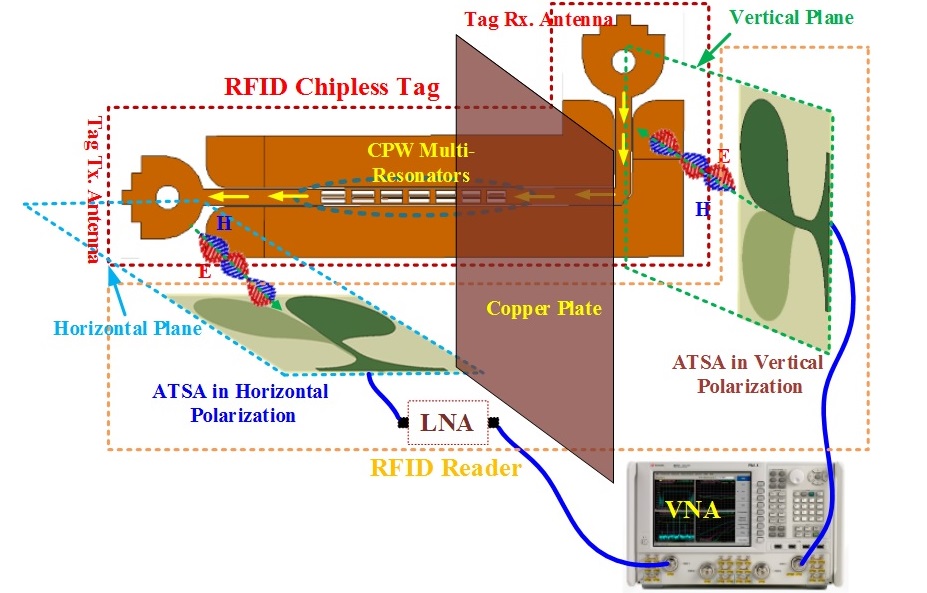UWB Ranging/Localization Using RFID Tags
UWB Ranging/Localization Using RFID Tags
Funding Agency: KACST-National Center for Electronics and Photonics Technology
Status: Completed (October 2016)
A fully passive UWB-RFID technology is classified into one of the next generation item tracking systems which deploys a broadband antennas for the transmission and reception of nanoseconds interrogation signals backscattered or encoded by a chipless tag. Chipless tags are expected to generate distinguished signatures that are programmable by changing the status of hard coded bits controlled by their physical structures. Due to shorter wavelength a moderate size RFID system can be developed without compromising the required performance characteristics. The figure below shows an exemplary experimental setup used to characterize passive UWB-RFID system including the tags and reader antennas. The tag (also called transponder) and reader designed using omni and directional antennas, respectively, are considered as major components of the UWB-RFID system. A high performance UWB-RFID system can’t be guaranteed without high efficient antenna elements. Therefore, this project aims to designing UWB omni and directive antennas using various state of the art design techniques and implementation technologies including low temperature co-fired ceramics (LTCC), printed circuit board fabrication and circuit fabrication using inkjet printer. The reader antennas are optimized to have directional radiation pattern with average gain more than 10 dBi over the spectrum of interest. Passive RFID transponders require broadband highly efficient radiators integrated with robust encoders generating signatures distinguishable either in frequency or time domain. Therefore, design of novel, compact size UWB multi-bit resonators structures based on low cost PCB or inkjet printing process have been targeted in this study to develop light weight and low cost RFID transponders.

Fig .1 Fully passive UWB RFID System.
